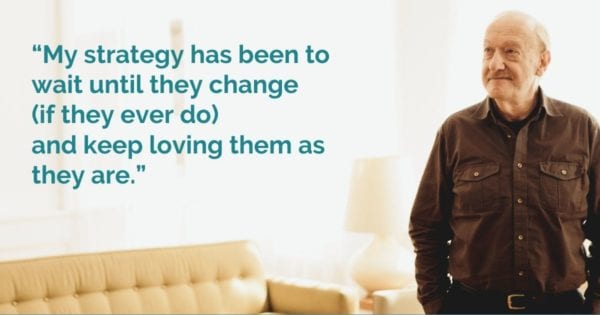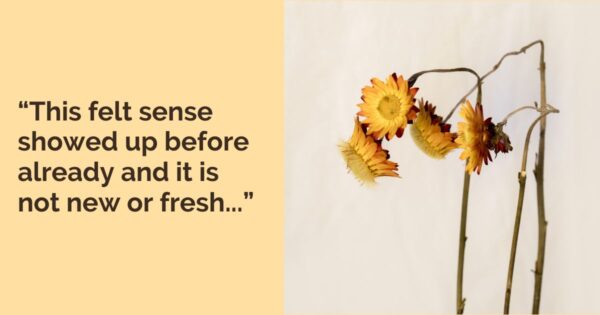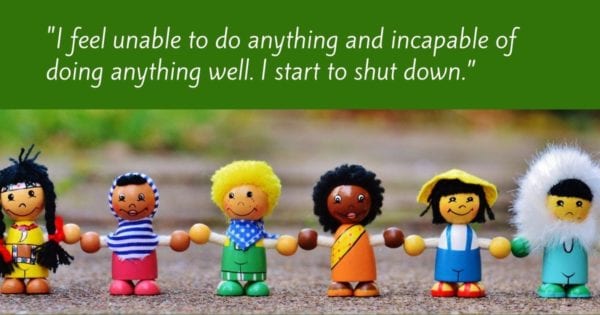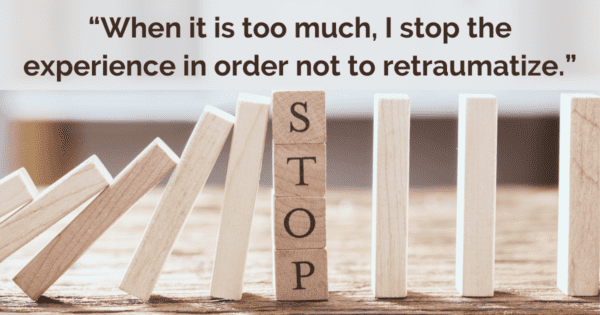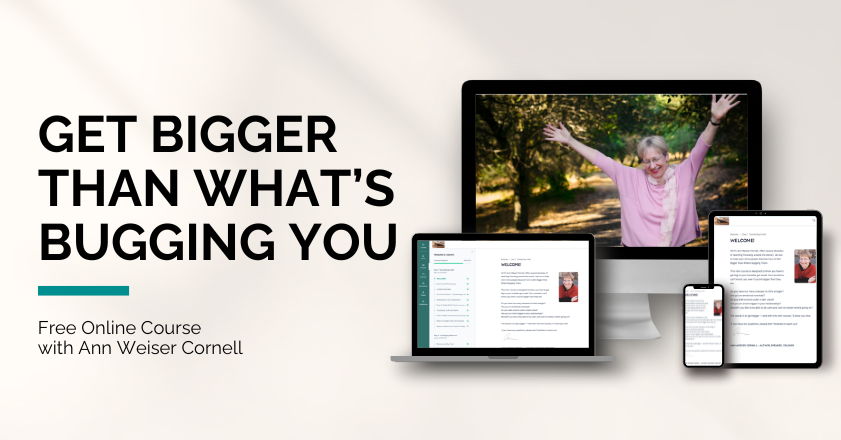The Felt Sense is Always the Difference
Last week I wrote about the difference between Focusing and some of the techniques used in hypnotherapy. My friend Lucinda Hayden helped me to answer, and we pointed out a number of differences.
Then we got an email from Scot, who wrote happily that, when we spoke about Focusing, “You might as well be reading out of the NLP Practitioners’ Handbook!”
I found that fascinating… but it also made me realize that we missed something last week, something very important: the felt sense. The felt sense is always the main difference between Focusing and any other method.
(True, there are other methods that have consciously incorporated Focusing… Levine’s Somatic Experiencing and Kurtz’s Hakomi Therapy are the ones that come to mind… but unless that is the case, other methods do not have Gendlin’s concept of the felt sense.)
The felt sense is not well understood, even in the Focusing community, because it’s not what you would expect. It’s not just the body feeling that is already there. It’s not just “how this feels in my body now.”
Sometimes I get emails from people who are excited because they have discovered that such-and-such a method “is really Focusing!”. When I investigate, it turns out that this method invites people to sense in the body.
Let us be clear: sensing in the body doesn’t mean we are Focusing.
So what does?
What’s So Special About a Felt Sense?
Yes, a felt sense is bodily, somehow. But it’s not just any way your body feels. It’s a special kind of sense that comes (when it is invited), that sums up or holds the whole of some situation you’re in.
For example, you might feel bad, ashamed, bitter, angry in connection to something going on in your life. You might walk around all day feeling those things, definitely in your body, and knowing that you feel them.
Focusing would add something to that. First, you would pause. You would deliberately take time, perhaps becoming conscious of your breathing, your whole body. Then you would make an invitation, like “So how is this whole thing feeling in me right now?”
And then wait.
And be ready to be surprised: because how the whole thing is right now might not at all be the same as what as been chasing you around all day.
I remember an amazing example of this. I had had a spectacular “failure.” I had planned six workshops overseas, and after a long plane trip, I learned that only four people had registered, total. I did one workshop and came home, feeling stupid and scared… since I was overextended anyway.
For about five days I walked around feeling bad, tight stomach like ice, shoulders clenched with shame. Then I went to my regular Focusing partnership. For the first time since it happened, I took time to invite the felt sense, the whole sense of it right now.
What came then was utterly astonishing. It was a feeling of being relaxed, going at top speed in a new direction. And that turned out to be true.
So the felt sense is not just how something feels, it’s how the whole thing feels, freshly, after a pause, sometimes after quite a long pause. Allowing the felt sense to come takes you to the other side of the problem. Amazing.

